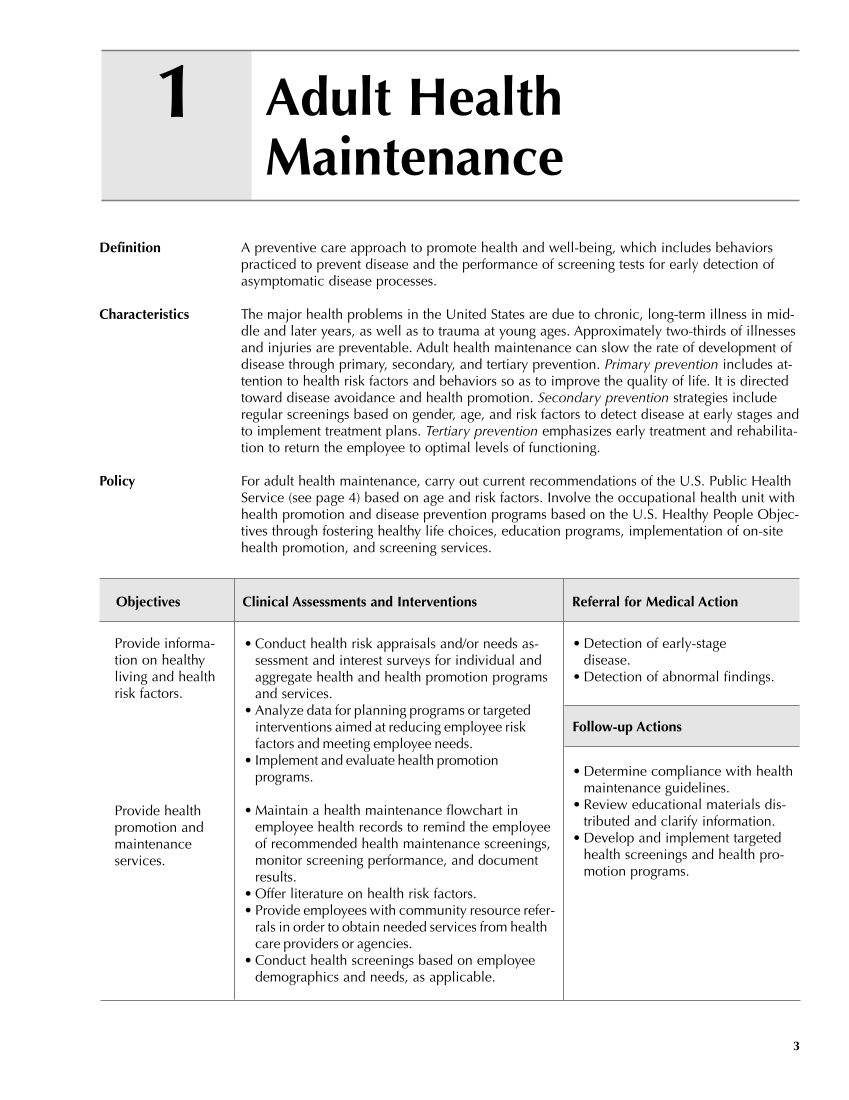Definition A preventive care approach to promote health and well-being, which includes behaviors practiced to prevent disease and the performance of screening tests for early detection of asymptomatic disease processes. Characteristics The major health problems in the United States are due to chronic, long-term illness in mid- dle and later years, as well as to trauma at young ages. Approximately two-thirds of illnesses and injuries are preventable. Adult health maintenance can slow the rate of development of disease through primary, secondary, and tertiary prevention. Primary prevention includes at- tention to health risk factors and behaviors so as to improve the quality of life. It is directed toward disease avoidance and health promotion. Secondary prevention strategies include regular screenings based on gender, age, and risk factors to detect disease at early stages and to implement treatment plans. Tertiary prevention emphasizes early treatment and rehabilita- tion to return the employee to optimal levels of functioning. Policy For adult health maintenance, carry out current recommendations of the U.S. Public Health Service (see page 4) based on age and risk factors. Involve the occupational health unit with health promotion and disease prevention programs based on the U.S. Healthy People Objec- tives through fostering healthy life choices, education programs, implementation of on-site health promotion, and screening services. Objectives Clinical Assessments and Interventions Referral for Medical Action 3 Adult Health Maintenance 1 • Detection of early-stage disease. • Detection of abnormal findings. Follow-up Actions • Determine compliance with health maintenance guidelines. • Review educational materials dis- tributed and clarify information. • Develop and implement targeted health screenings and health pro- motion programs. Provide informa- tion on healthy living and health risk factors. Provide health promotion and maintenance services. • Conduct health risk appraisals and/or needs as- sessment and interest surveys for individual and aggregate health and health promotion programs and services. • Analyze data for planning programs or targeted interventions aimed at reducing employee risk factors and meeting employee needs. • Implement and evaluate health promotion programs. • Maintain a health maintenance flowchart in employee health records to remind the employee of recommended health maintenance screenings, monitor screening performance, and document results. • Offer literature on health risk factors. • Provide employees with community resource refer- rals in order to obtain needed services from health care providers or agencies. • Conduct health screenings based on employee demographics and needs, as applicable. Guideline continues on next page
Purchased from OEM Press by (ge corporate access). (C) 2013 OEM Health Information, Inc. All rights reserved.












































































































































































































































































































































































































































